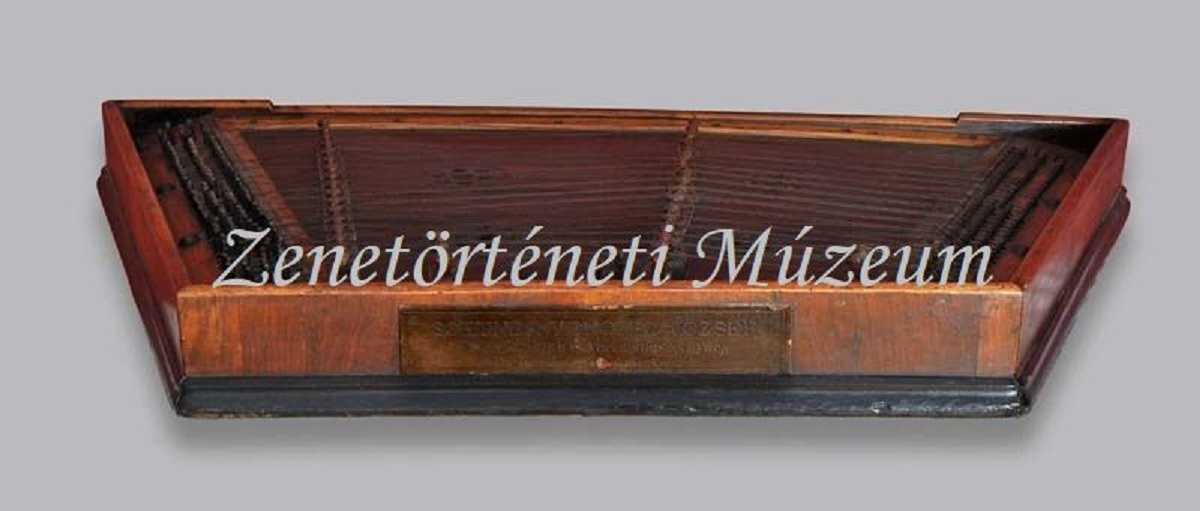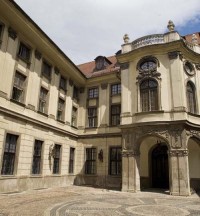DULCIMER (Cimbalom), 2nd half of the 19th century, Budapest
Label: SCHUNDA VENCZEL JÓZSEF / cs. és kir. szab. udvari hangszergyár / IV. Budapest Magyar utza 18. és 26.
Earlier tipe of the instrument, without pedal. Compass: D–a3 (4 octaves and fifth)
The word cimbalom is first mentioned in the 1416 Vienna Codex, however this mentioning does not refer to a percussion string instrument, because the Latin term cymbalum originally denoted a plate shaped percussion instrument. The dulcimer (henceforward cimbalom) evolved in the 15th century from the psaltery, which was a plucked zither without fingerboard. The cimbalom has been known in Hungary since the 16th century, however, it only spread during the 18th century with the emergence of gypsy bands. The cimbalom in the 19th century became the musical symbol of Hungarians striving for independence. Vencel József Schunda developed the simple cimbalom used in folk music into the pedal-cimbalom in 1874 for art musical purposes, and it acquired international renown through the musical activities of Ferenc Liszt and Aladár Rácz.
en

